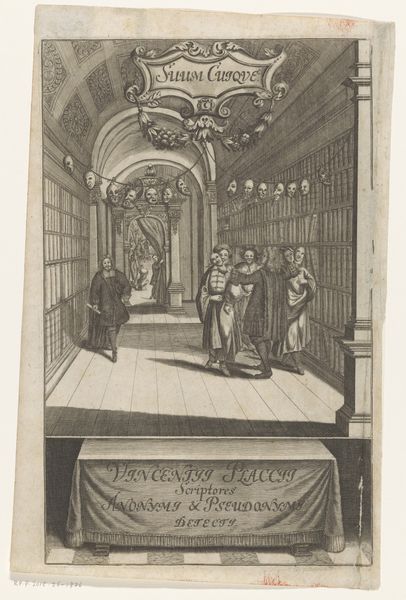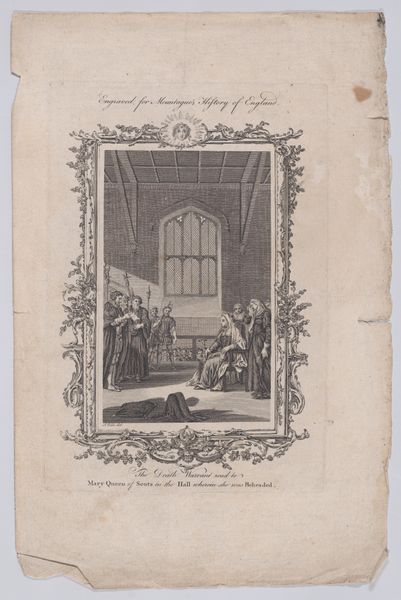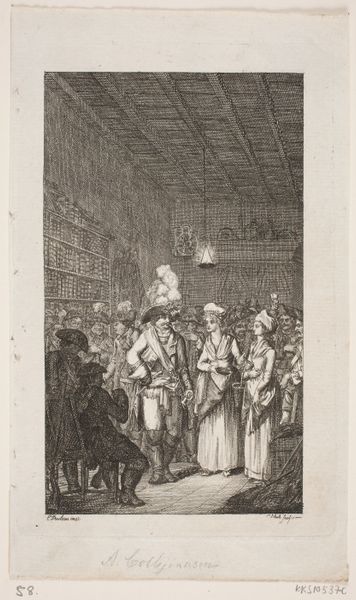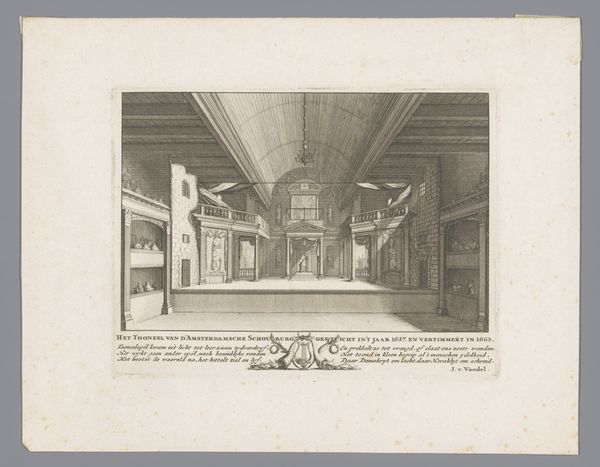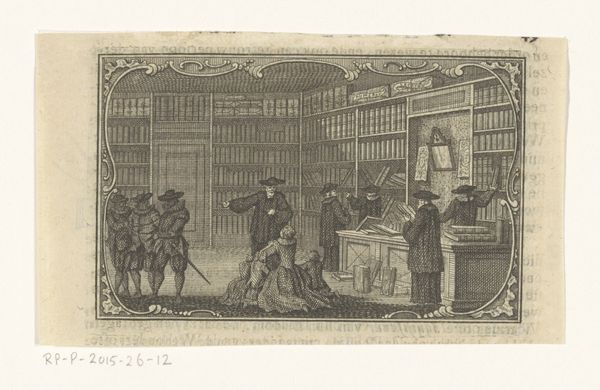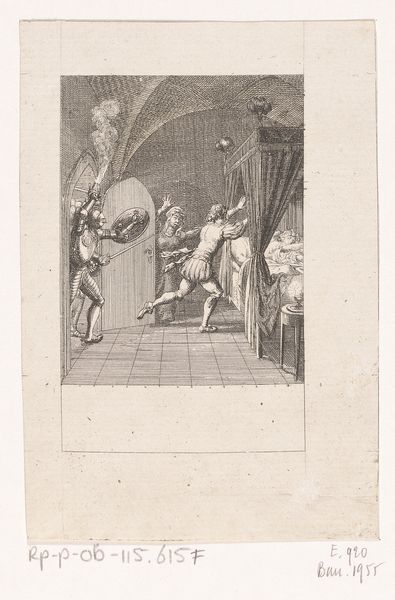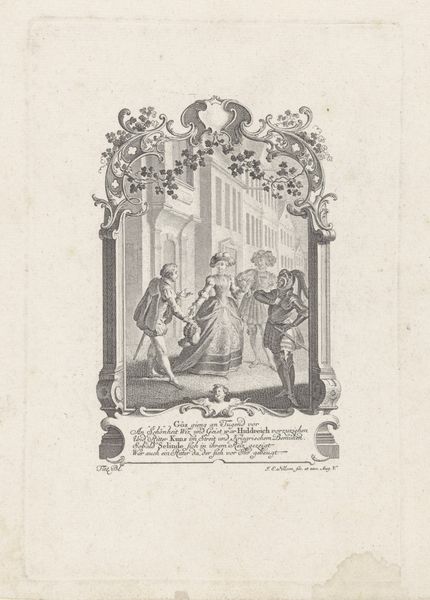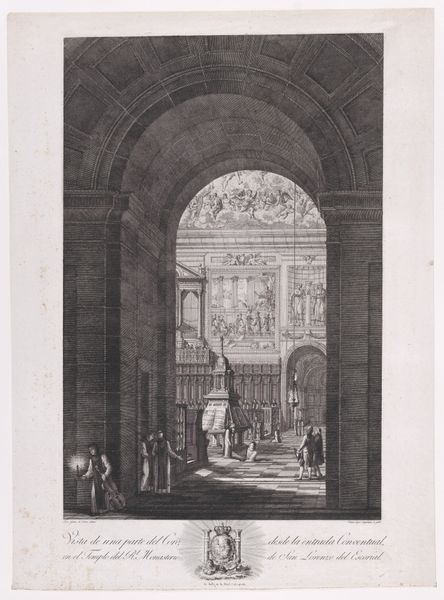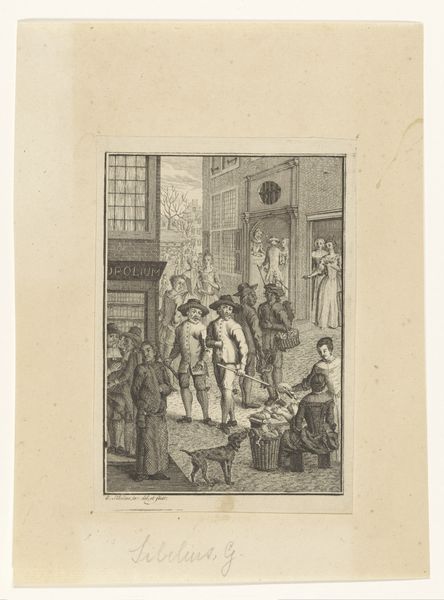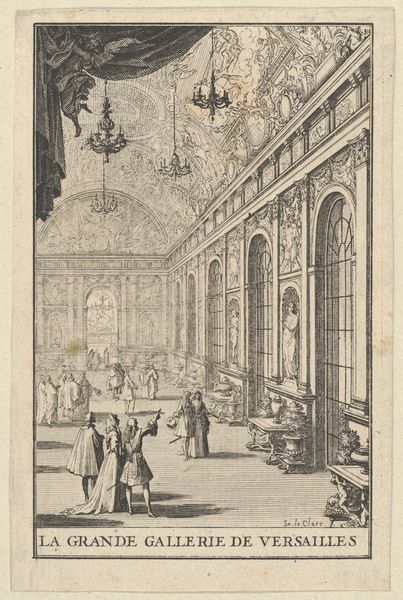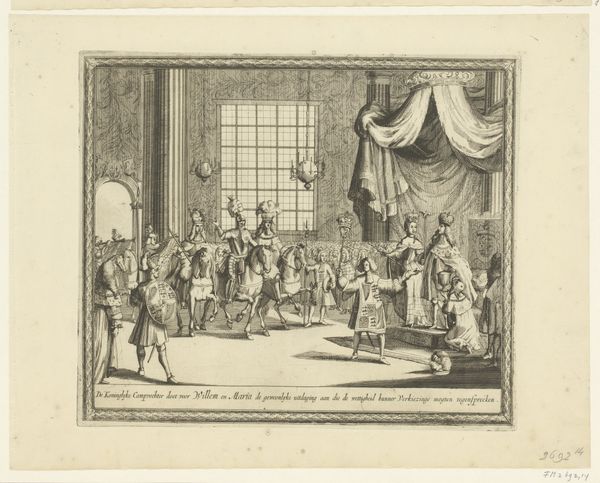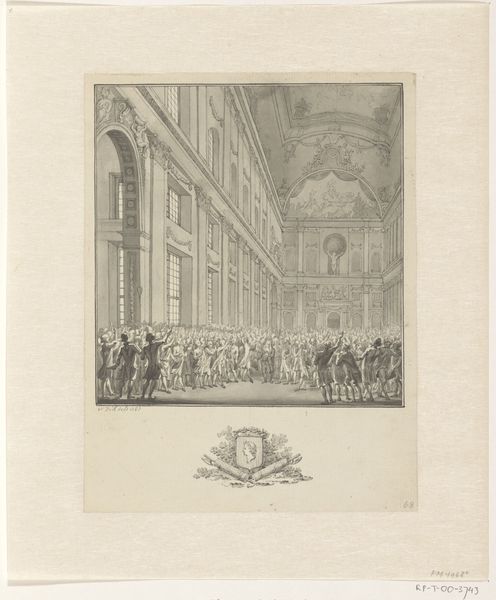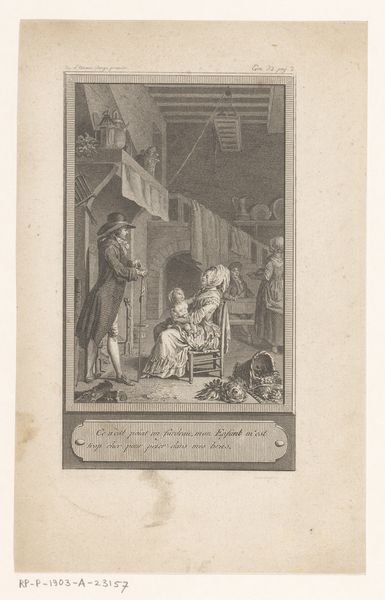
Dimensions: height 277 mm, width 136 mm
Copyright: Rijks Museum: Open Domain
Curator: This engaging print is entitled “Galerij van het Paleis van Justitie te Parijs.” Created between 1762 and 1774 by Noél Le Mire, it gives us a glimpse into the social life of the time. It's now held here at the Rijksmuseum. What’s your first take on it? Editor: The eye is drawn down the long corridor by those repetitive lines. A flurry of small, ornate shapes—the decorative frame, the bustling figures—almost overwhelms the composition, like a hyperactive Baroque dream. Curator: Exactly. Le Mire's decision to depict a genre scene within the baroque aesthetic adds another layer to it. It’s not merely a street scene; it captures an emerging sense of commerce, but also a place where genders from different classes could co-mingle, and to an extent, see the legal world in action. We're getting to witness that through Le Mire's observational lens. Editor: Observation indeed, which Le Mire masterfully converts through the rigid order of engraving. Look closely: the density of lines dictates the shading, guiding the light source. The structural framework mirrors the architecture it portrays. It’s a fascinating translation of space and depth via a calculated graphic language. Curator: And it wasn't simply about recreating a visual likeness. Remember, Justice at the time was often administered unfairly to people who did not belong to the aristocracy, to people of color, and, perhaps even here in Le Mire’s representation, we catch hints of those subtle inequalities playing out within the judicial system. Editor: An important counter-perspective, of course, however I am drawn more to consider its structure—the interplay of order and chaos as manifested through the artist’s marks. Curator: Ultimately, "Galerij van het Paleis van Justitie te Parijs" invites us to ponder both its aesthetic and the deeper meanings embedded within Parisian society. Editor: Yes, the technique itself, and those stylistic considerations allow access to so many readings—historic, cultural, and social.
Comments
No comments
Be the first to comment and join the conversation on the ultimate creative platform.
